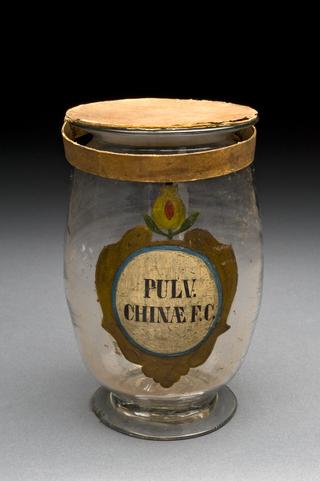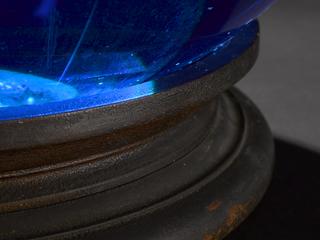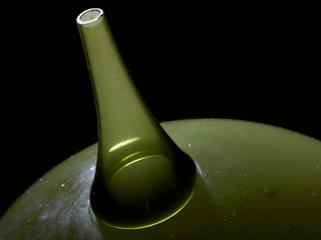
Blue ridged glass bottle for arsenic, Europe, 1701-1935
- Made:
- 1801-1935 in United Kingdom






Poison bottle, blue for arsenic in solution, unsigned, British, 1801-1935.
Although potentially highly poisonous, arsenic was used as a component in a range of treatments for many centuries. Like the similarly toxic chemical mercury, arsenic was a popular treatment for syphilis. Although its medical applications have been reduced in the last century, arsenic compounds can be used to treat certain conditions, such as severe leukaemia.
Used in a pharmacist’s shop, this blue glass bottle is ridged, so the user would know by touch that its contents were poisonous if given in large doses. Coloured glass was also used to indicate poisons.
Look closer
Glass arsenic bottleDetails
- Category:
- Medical Glass-ware
- Collection:
- Sir Henry Wellcome's Museum Collection
- Object Number:
- A600213
- Materials:
- glass
- Measurements:
-
overall: 220 mm 80 mm, .6kg
- type:
- bottle




